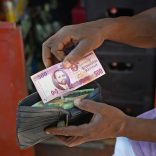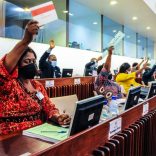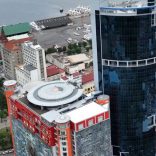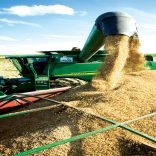Mozambique: Savings deposits grow 15% in one year
Mozambique’s economy on the road to recovery

File photo / A view of Maputo
The Mozambican economy has been showing signs of revival, with the economy accelerating, the currency gaining value and international reserves being restored after a difficult year in 2016, analysts indicate.
The World Bank stated in its recent “Mozambique Economic Update” study that since the slowdown, metical depreciation and inflation in year 2016, “early trends in 2017 show signs of improvement”.
Besides acceleration of the gross domestic product growth rate in the first quarter to 2.9 percent, the metical strengthened by 28 percent in the first nine months compared to the US dollar, due to “strong monetary policy response” which “also helped inflation to slowly begin easing”.
Improved exports, driven by the recovery of commodity prices, particularly coal, also increased the intake of currencies, thereby enabling recovery of international reserves.
“Strengthening prices for coal, aluminium and gas, a post El Niño recovery in agriculture, and progress in peace talks, could steer growth to 4.6 percent in 2017, and towards 7 percent by the end of the decade,” the World Bank asserts.
The international financial institution also warned of some challenges, such as possible fluctuations in commodity prices and inflation levels that are still high, a reference lending rate “among the highest in sub-Saharan Africa” and average commercial bank lending rates (around 30 percent) “prohibitively high for much of the private sector”.
Another key challenge, it states, is budget policy and the need to restructure debt, which is currently “unsustainable”.
Expectations for economic revival rest largely on liquid natural gas projects for the Rovuma Basin in the north, involving large-scale investments.
The Italian group ENI, leader of an international consortium that includes the China National Petroleum Corporation Group, reached a final investment decision (FID) on 1 June for the LNG project in the area 4 bloc of the Rovuma Basin, which should begin producing in 2022.
The Mozambican government hopes that the other consortium (area 1) operating in the Rovuma Basin, led by the US group Anadarko Petroleum, will make its FID by the end of the year.
The Economist Intelligence Unit has stated that the Mozambican economy should grow 4.2 percent in 2017, “driven almost entirely by the mineral sector.”
“The coal industry will expand quickly, driven by stronger international prices, robust demand in India (Mozambique’s main export market) and recent efforts of mining companies to increase efficiency,” the EIU indicated in its latest report on the country.
It nevertheless warns that “budget austerity, tight liquidity conditions and high inflation will smother domestic demand and political uncertainty will prolong the decline in investment,” even though growth is accelerating to an average of 5.3 percent from 2018 to 2021.
Africa Monitor Intelligence has also stated that increased exports, especially by extractive industries (coal and aluminium), international financing (largely from the World Bank) and the effect of major ongoing investments in the energy sector, “have been decisive recent factors to boost the metical’s value and restore confidence in the economy”.













Leave a Reply
Be the First to Comment!
You must be logged in to post a comment.
You must be logged in to post a comment.